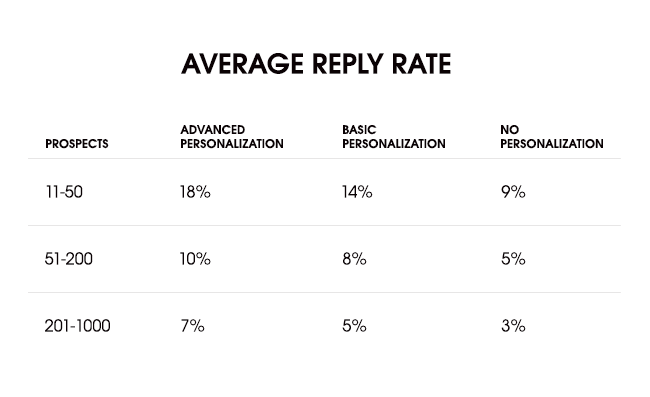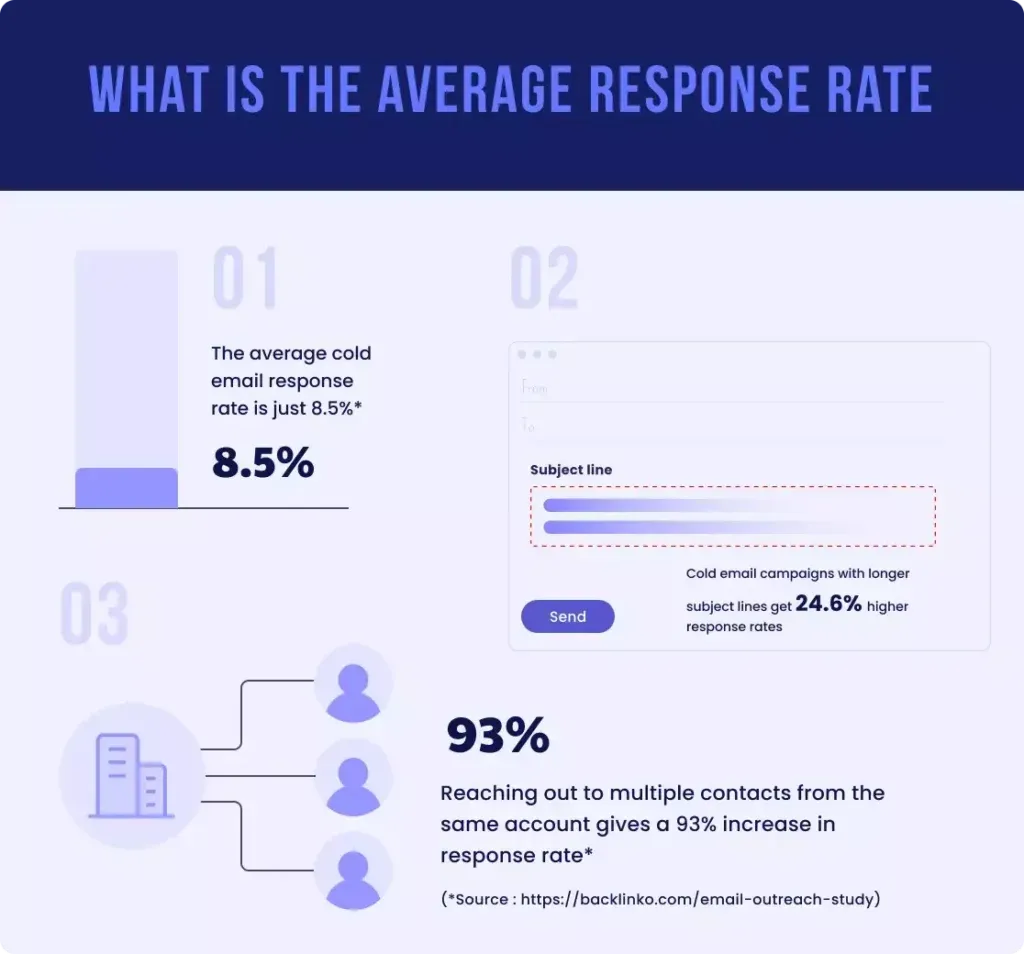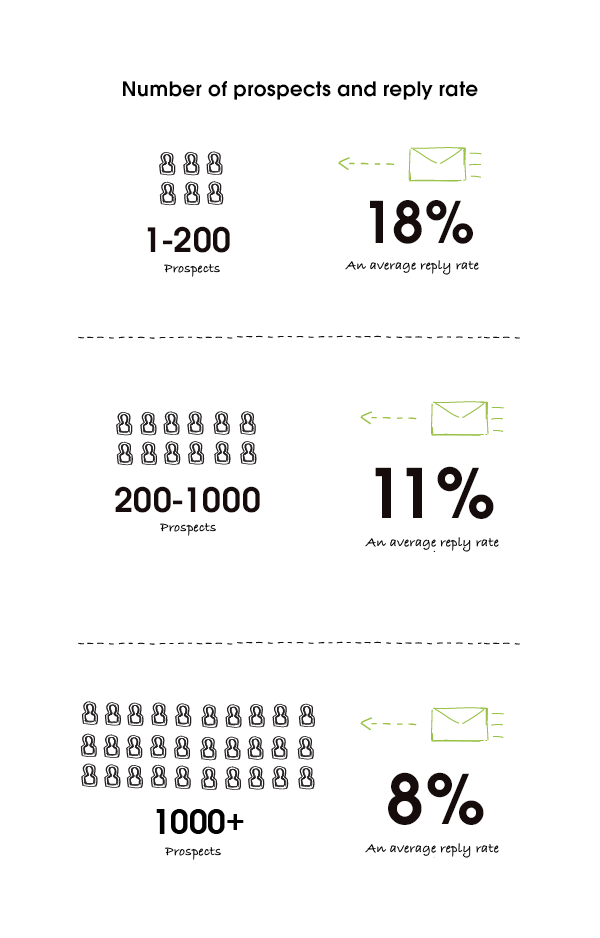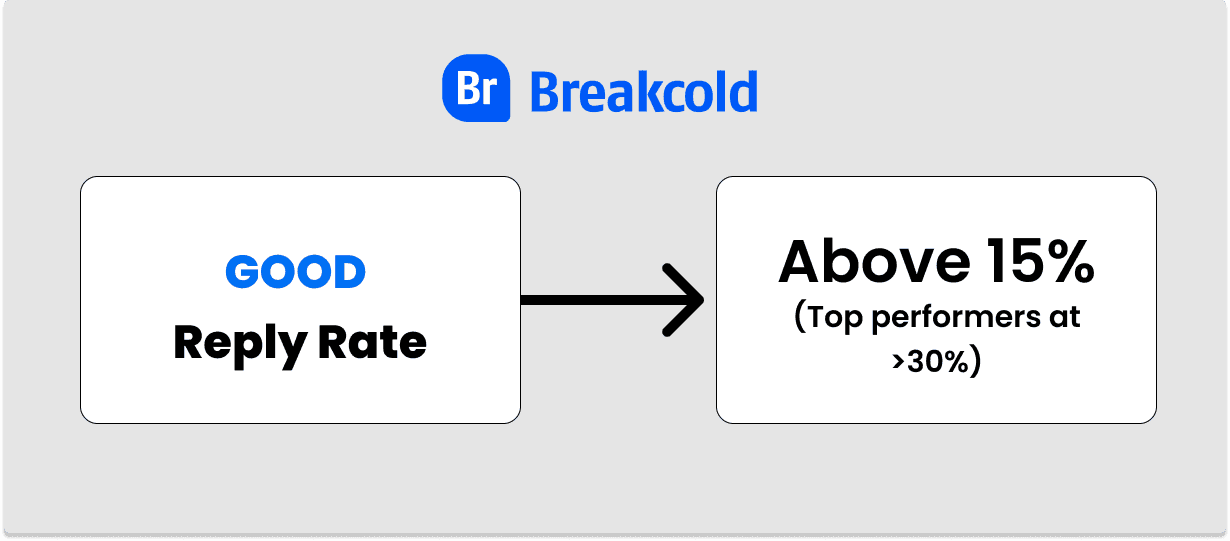A good reply rate for cold emails ranges between 10% to 30%. This rate can vary based on industry and email quality.
Understanding what influences reply rates is key to improving your cold email strategies. Cold emailing is a common practice in sales and marketing. It’s a method to reach potential clients or partners. But how do you know if your efforts are successful?
The reply rate is a crucial metric to track. It helps gauge the effectiveness of your emails. A low reply rate might mean your emails aren’t engaging enough. On the other hand, a high reply rate shows good engagement. Knowing the average reply rates can help set realistic goals. In this blog, we’ll explore what constitutes a good reply rate for cold emails. We’ll also discuss tips to improve your response rates. Stay tuned for valuable insights.

Credit: woodpecker.co
Introduction To Cold Emailing
Cold emailing is an outreach strategy. It involves sending unsolicited emails to potential leads. This method aims to initiate a conversation. It’s popular in sales, marketing, and networking.
Cold emailing is effective for reaching new clients. It also helps in building professional relationships. But, it requires a strategic approach to be successful.
Purpose And Benefits
The purpose of cold emailing is to generate interest. It aims to create opportunities for engagement. Here are some key benefits:
- Cost-effective: Cold emailing is budget-friendly. It requires minimal resources.
- Scalable: You can send emails to many recipients at once.
- Personalized: Tailor messages to specific audiences. This increases the chances of a positive response.
- Measurable: Track open rates and reply rates. Analyze these metrics to improve your strategy.
Challenges And Obstacles
Cold emailing is not without challenges. Here are some common obstacles:
- Low response rates: Many recipients may ignore or delete your emails.
- Spam filters: Emails may end up in spam folders. This reduces visibility.
- Compliance: Ensure emails comply with regulations like GDPR.
- Relevance: Crafting relevant and engaging content is crucial. It can be time-consuming.
Overcoming these challenges requires persistence. It also demands continuous improvement. Use feedback to refine your approach.
Defining Reply Rate
Defining Reply Rate is crucial for any cold email campaign. It helps measure the effectiveness of your outreach. Understanding what constitutes a good reply rate can significantly enhance your email strategy.
What Is Reply Rate?
Reply Rate refers to the percentage of recipients who respond to your cold emails. This metric highlights the engagement level of your audience. A high reply rate indicates that your emails resonate with recipients.
Why Reply Rate Matters
Knowing your Reply Rate is vital. It tells you if your emails are effective. Analyzing reply rates helps you improve your strategy. It can lead to better engagement and more conversions.
Consider these points:
- High reply rates suggest strong interest.
- Low reply rates may indicate poor targeting.
- Monitoring reply rates helps refine your approach.
To sum up, understanding and improving your reply rate can lead to a more successful cold email campaign.
Industry Standards
Understanding the industry standards for cold email reply rates is crucial. It helps you set realistic goals and measure your success. A good reply rate can vary widely between industries. Knowing the average rates helps you gauge where you stand.
Average Reply Rates
On average, cold email reply rates range from 1% to 5%. This means that out of 100 emails sent, you might get 1 to 5 replies. Some industries perform better, achieving reply rates closer to 8% or 10%. But remember, these are just averages.
Benchmark Comparisons
Different industries have different benchmarks. For instance, the tech industry often sees higher reply rates. Sales emails in tech can achieve up to a 10% reply rate. In contrast, industries like manufacturing might see lower rates, closer to 2% or 3%. Comparing your rates to these benchmarks can help you understand your performance.

Credit: www.klenty.com
Factors Influencing Reply Rates
A good reply rate for cold emails can vary. It usually depends on several factors. These factors can make or break your outreach efforts. Understanding them can help you improve your strategy and get better results.
Target Audience
Your target audience plays a key role in your reply rates. Knowing who you are emailing is crucial. Different audiences respond differently. For example, busy executives may not reply as quickly as small business owners. Therefore, segment your list based on demographics and interests.
Create personalized messages for each segment. This increases the chances of engagement. Use data to understand your audience’s pain points and needs. Tailor your emails to address these specific issues.
Email Content Quality
The quality of your email content is another important factor. High-quality content grabs attention and encourages replies. Your email should be clear and concise. Use a strong subject line to entice the recipient to open the email. Avoid using too many industry-specific jargon.
Here are some tips for improving your email content:
- Use a compelling subject line.
- Keep your message short and to the point.
- Include a clear call to action.
- Personalize your email with the recipient’s name.
- Avoid using too many images or links.
Always proofread your email before sending. Typos and errors can make you look unprofessional. A well-written email increases the likelihood of a reply.
Improving Reply Rates
Cold emailing can be tricky. Many people ignore unsolicited emails. But there are ways to improve your reply rates. Personalization and effective subject lines can make a big difference. Let’s explore these techniques in detail.
Personalization Techniques
Personalization is key to engaging your recipient. Here are some techniques:
- Use the recipient’s name: Addressing someone by name makes the email feel more personal.
- Research their background: Mention something specific about their work or interests.
- Reference mutual connections: If you have a common acquaintance, mention them.
- Show genuine interest: Highlight why you are reaching out to them specifically.
Personalized emails show that you have put in effort. This can increase the chances of getting a reply.
Effective Subject Lines
The subject line is the first thing recipients see. It determines if they open your email. Here are some tips for writing effective subject lines:
- Keep it short: Aim for 5-7 words.
- Be clear: The recipient should understand the email’s purpose.
- Create curiosity: Use questions or intriguing statements.
- Offer value: Mention a benefit or solution.
- Avoid spammy words: Words like “free,” “urgent,” or “limited time” can trigger spam filters.
Effective subject lines can significantly improve open rates. This increases the chance of getting a reply.
By using these personalization and subject line techniques, you can improve your cold email reply rates. Start implementing these tips and watch your engagement grow.
Measuring Success
Understanding what makes a cold email campaign successful is key. One crucial aspect is the reply rate. But how do we determine if our reply rate is good? This is where measuring success comes into play. By tracking key metrics and analyzing data, we can gauge the effectiveness of our cold emails.
Tracking Metrics
Tracking metrics involves monitoring various aspects of your cold email campaign. Here are some important metrics to track:
- Open Rate: The percentage of recipients who open your email.
- Reply Rate: The percentage of recipients who reply to your email.
- Click-Through Rate (CTR): The percentage of recipients who click on a link within your email.
- Bounce Rate: The percentage of emails that could not be delivered.
- Unsubscribe Rate: The percentage of recipients who opt out of your emails.
These metrics help in identifying areas for improvement. For example, a low open rate might indicate a weak subject line. A low reply rate might mean the email content needs tweaking.
Analyzing Data
Once you have collected the data, analyze it to understand trends and patterns. This can be done in several ways:
- Compare Campaigns: Look at different campaigns to see which ones performed better.
- Identify Trends: Notice any common factors among high-performing emails.
- Segment Data: Break down data by recipient demographics to see who is engaging more.
Use tools like Excel or Google Sheets to create tables and graphs. This visual representation helps in spotting trends more easily. For example:
| Campaign | Open Rate | Reply Rate | CTR |
|---|---|---|---|
| Campaign A | 30% | 5% | 10% |
| Campaign B | 40% | 8% | 12% |
| Campaign C | 35% | 6% | 11% |
By comparing these metrics, you can determine what works best. Adjust your strategies based on these insights. This continuous improvement is crucial for achieving a good reply rate.
Case Studies
Understanding what makes a good reply rate for cold emails is crucial for businesses. This section explores some case studies. They provide insights into successful campaigns and the lessons learned. Analyzing these case studies reveals a significant correlation between the content of the email and the average open rates for cold emails. Campaigns that tailored their messages to specific audiences consistently outperformed generic outreach efforts. These insights not only highlight effective strategies but also underscore the importance of personalization in achieving higher engagement rates.
Successful Campaigns
Several companies have shared their experiences with cold email campaigns. They have shown the importance of a high reply rate. Below are a few success stories:
| Company | Industry | Reply Rate | Strategy |
|---|---|---|---|
| TechCo | Technology | 20% | Personalized emails with clear CTAs |
| HealthInc | Healthcare | 15% | Targeted messages and follow-ups |
| EduWorks | Education | 18% | Value-driven content and segmented lists |
These companies saw a high reply rate due to their unique strategies. They focused on personalization, targeted messages, and value-driven content.
Lessons Learned
From these case studies, several key lessons emerge:
- Personalization is key: Customized emails have higher engagement.
- Clear CTAs: A clear call-to-action encourages replies.
- Follow-ups matter: Sending follow-up emails increases reply rates.
- Segmented lists: Targeting specific groups leads to better results.
Businesses should focus on these strategies to improve their cold email reply rates. Learning from others can help refine and optimize your approach.

Credit: woodpecker.co
Frequently Asked Questions
What Is A Good Cold Email Reply Rate?
A good reply rate for cold emails is typically around 10-20%. This varies based on industry, target audience, and email quality.
How Can I Improve My Cold Email Reply Rate?
To improve reply rates, personalize your emails, offer clear value, and keep the message concise. A/B testing can also help.
Why Do Cold Emails Get Low Reply Rates?
Cold emails get low reply rates due to lack of personalization, irrelevant content, or poor subject lines. Ensure relevance and value.
What Affects Cold Email Reply Rates?
Several factors affect reply rates: email content, subject line, personalization, target audience, and timing. Optimize these elements for better results.
Conclusion
Achieving a good reply rate for cold emails can be challenging. Aim for a rate of 10-20%. This shows your emails resonate well. Test different approaches. Tweak your subject lines. Personalize your messages. Track your results. Learn from both successes and failures.
Keep your emails clear and concise. Always focus on the recipient’s needs. Remember, persistence and patience are key. With consistent effort, you can improve your reply rates over time. Stay dedicated.
